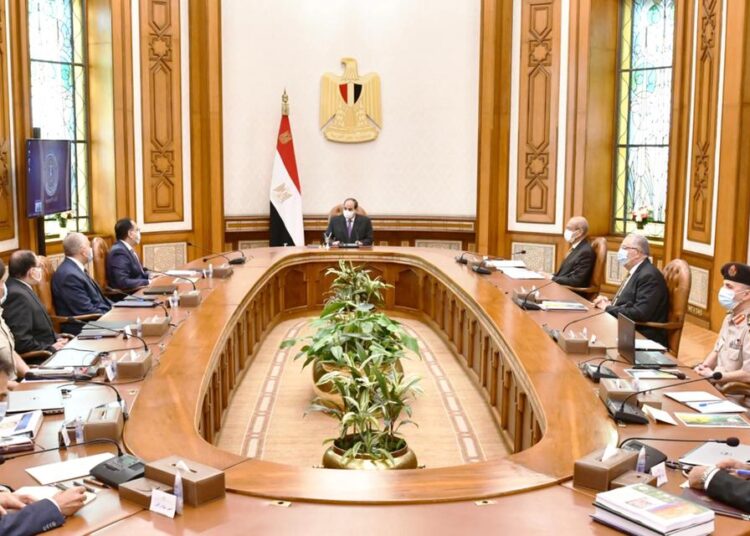Egyptian President Abdel Fattah el sisi has called for sustaining the thrust of comprehensive development efforts in Sinai, making special reference in this context to land reclamation projects. such projects, the president noted, aim at increasing the size of agricultural lands in central and northern sinai and setting up developmental and residential communities.
The president’s directives came during his meeting Monday with Prime Minister Moustafa Madbouli, Presidential Assistant for national and strategic Projects sherif ismail, a number of Cabinet ministers and top government officials, Presidency spokesman Ambassador Bassam radi said.
The meeting, spokesman radi added, was called to review the executive status of the national project for land reclamation in central and northern sinai in his remarks during the meeting, President sisi noted that the drive to bolster comprehensive development in sinai comes as part of the state’s overall strategy to expand integrated agriculture and land reclamation nationwide.
This drive, the president added, comes also in complementation with similar projects, especially including those that are under way in the new delta zone in the northwest of the country, in the toshka area and in east al-Owainat in the river nile Valley southern part.
President sisi urged that efforts to reclaim the targeted lands in the sinai peninsula be provided with the latest equipment and machinery. He also called for prospecting the best agricultural activities and the application of the most up-to-date irrigation techniques so as to optimise the utilisation of water and boost production both quantitatively and qualitatively.
President sisi’s directives and remarks followed presentations made by participants in the meeting on the progress of action to reclaim lands in central and north sinai in coordination between the state bodies concerned. such coordination has involved surveying and studying data on the characteristics of soil in the areas for land reclamation.
Also reviewed during the meeting were the ongoing efforts to put in place the infrastructure deemed necessary for
providing the project with water resources, including the irrigation water paths and the utilisation of existing sources of agricultural drain water.






Discussion about this post